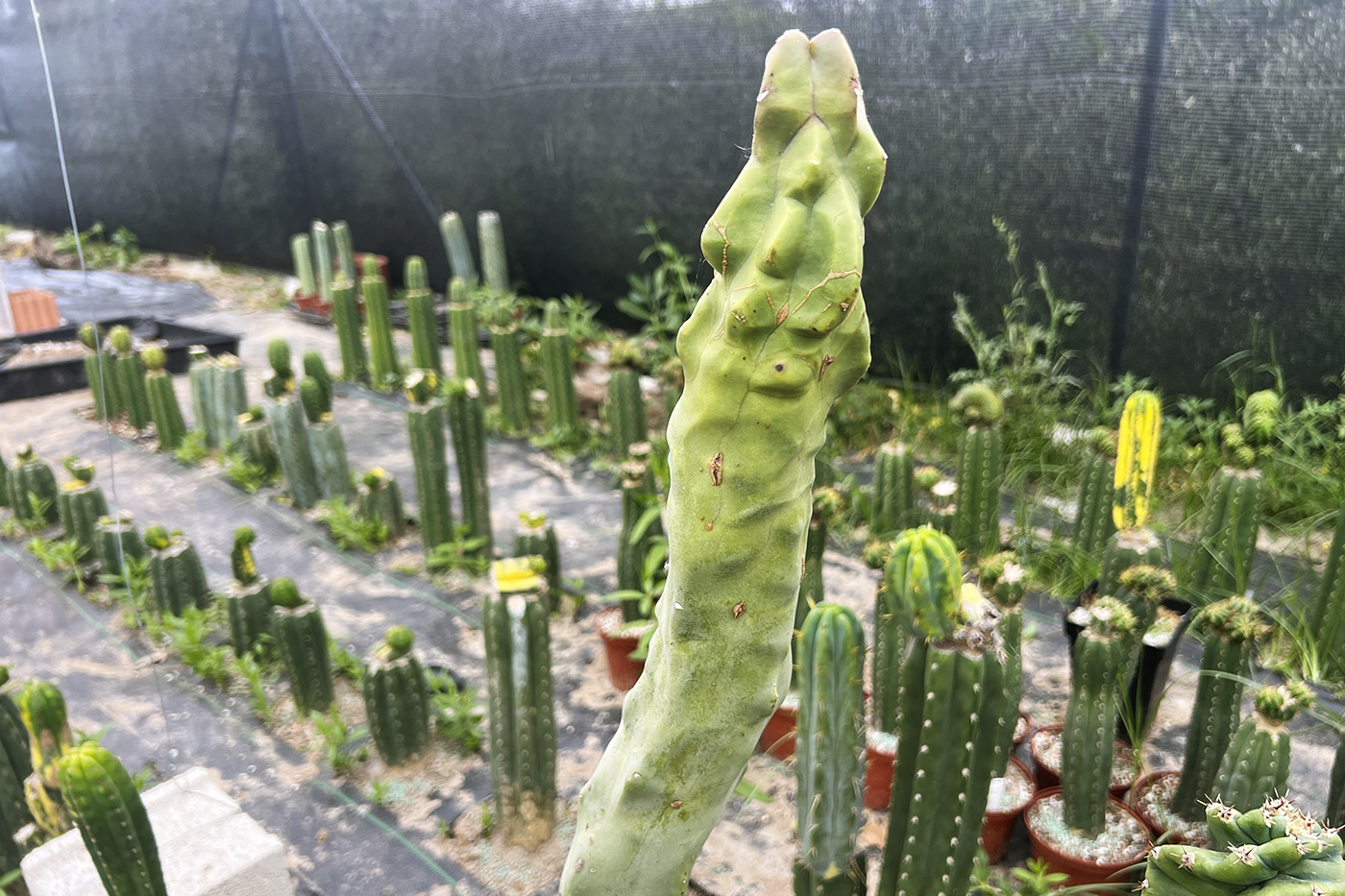Permaculture is a design methodology focused on creating ecologically balanced and sustainable systems. In this context, the Trichocereus cactus genus (also known as Echinopsis), which includes species like the famous San Pedro cactus (Trichocereus macrogonus var. pachanoi), emerges as a valuable ally in permaculture-based agriculture.
In this article, we explore how Trichocereus can be integrated into sustainable systems, highlighting its ecological importance, traditional uses, and its relationship with core permaculture practices.
1. Ecological Characteristics of Trichocereus
Trichocereus cacti are native to South American regions, including Bolivia, Chile, Ecuador, and Peru. They are known for their ability to thrive in harsh, arid environments where water is scarce.
🌿 Key Ecological Advantages:
-
Drought resistance: Trichocereus stores water efficiently, making it an excellent plant for water-scarce permaculture zones.
-
Organic matter contribution: Through fallen flowers and debris, these cacti enrich the soil, improving structure and fertility.
-
Biodiversity: Their presence supports pollinators and other small organisms, boosting ecosystem diversity.
2. Uses of Trichocereus in Permaculture
Beyond its ornamental appeal, Trichocereus serves multiple functions within a permaculture design:
🍎 Edible Uses
Some species bear edible fruits, contributing to local food security—especially in areas with limited crop diversity.
🌿 Medicinal Value
San Pedro cactus has long been used in traditional medicine. Including medicinal plants in permaculture fosters a holistic health approach within sustainable communities.
🌀 Cultural and Spiritual Significance
In Andean cultures, Trichocereus is often used in ceremonial practices. Including such plants in permaculture not only enhances biodiversity but also preserves cultural heritage and encourages ethically rooted land stewardship.
3. Integrating Trichocereus into Permaculture Design
📍 Strategic Considerations:
-
Zoning: Plant Trichocereus in sunny areas that naturally receive rain runoff—this maximizes their growth and environmental benefits.
-
Companion planting: Pair with plants that tolerate dry conditions or benefit from partial shade.
-
Pest management: Their natural resistance and compatibility with organic farming practices make Trichocereus a strong element in biological pest control strategies.
4. Environmental Benefits
Integrating Trichocereus into permaculture enhances sustainability and resilience in multiple ways:
-
Water conservation: Helps retain soil moisture in dry regions.
-
Soil health: Contributes to organic matter and fosters a healthier microbial environment.
-
Reduced external inputs: When cultivated alongside other crops, Trichocereus reduces reliance on chemical fertilizers and pesticides, supporting self-sufficient systems.
🌱 Conclusion: Trichocereus as a Permaculture Pillar
Incorporating Trichocereus into permaculture systems enhances both biodiversity and ecosystem function, while offering cultural and economic benefits. By promoting a more conscious and responsible form of agriculture, this cactus supports a vision of land care rooted in tradition and sustainability.
To unlock its full potential, permaculture designers and farmers should collaborate with local communities, blending traditional ecological knowledge with modern sustainable techniques. This synergy can lead to systems that benefit people and planet alike.
As the demand for resilient and regenerative agriculture grows, Trichocereus stands out as an indispensable resource. Its versatility, drought tolerance, and cultural depth make it a key species for the future of sustainable agriculture.




